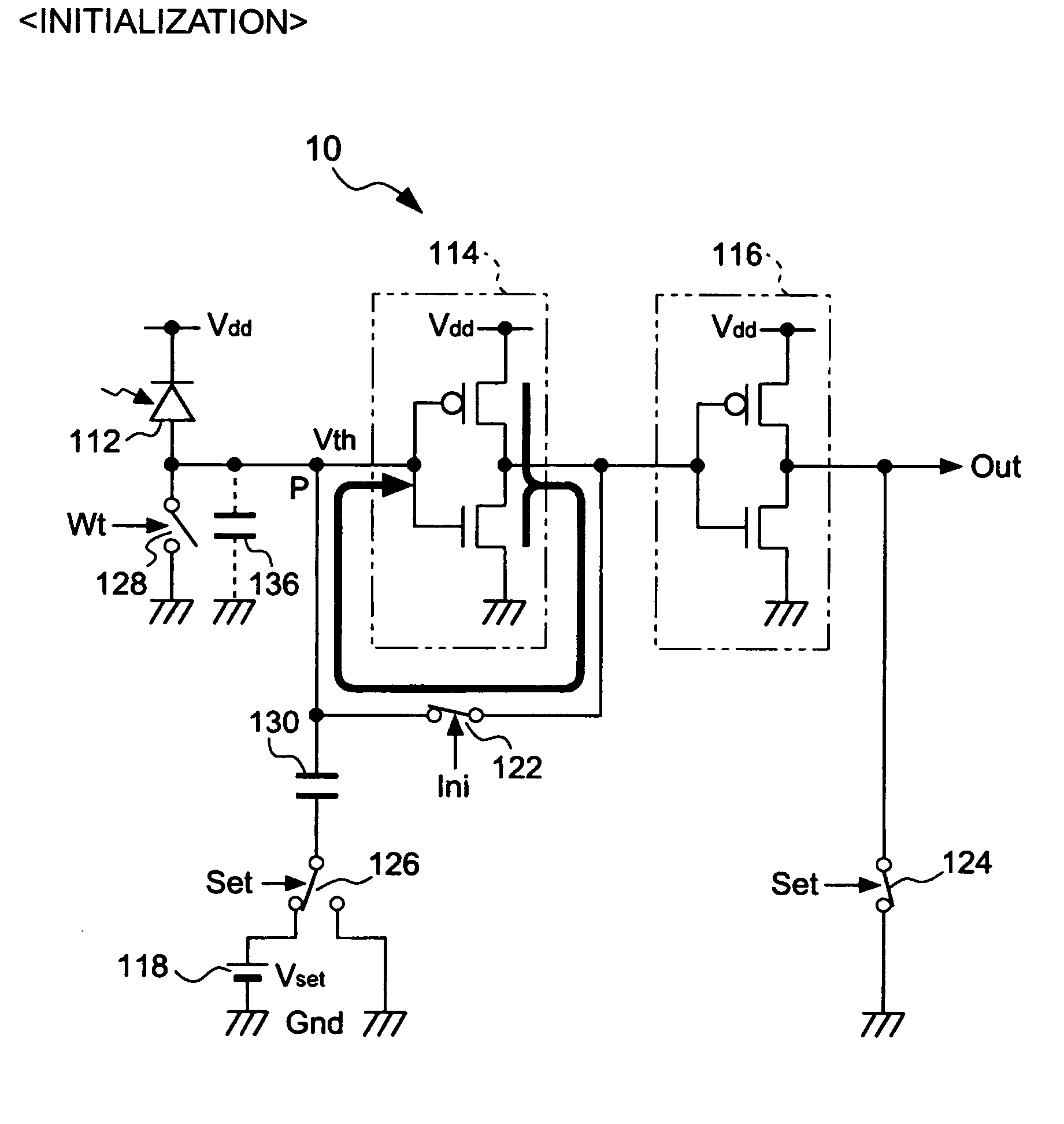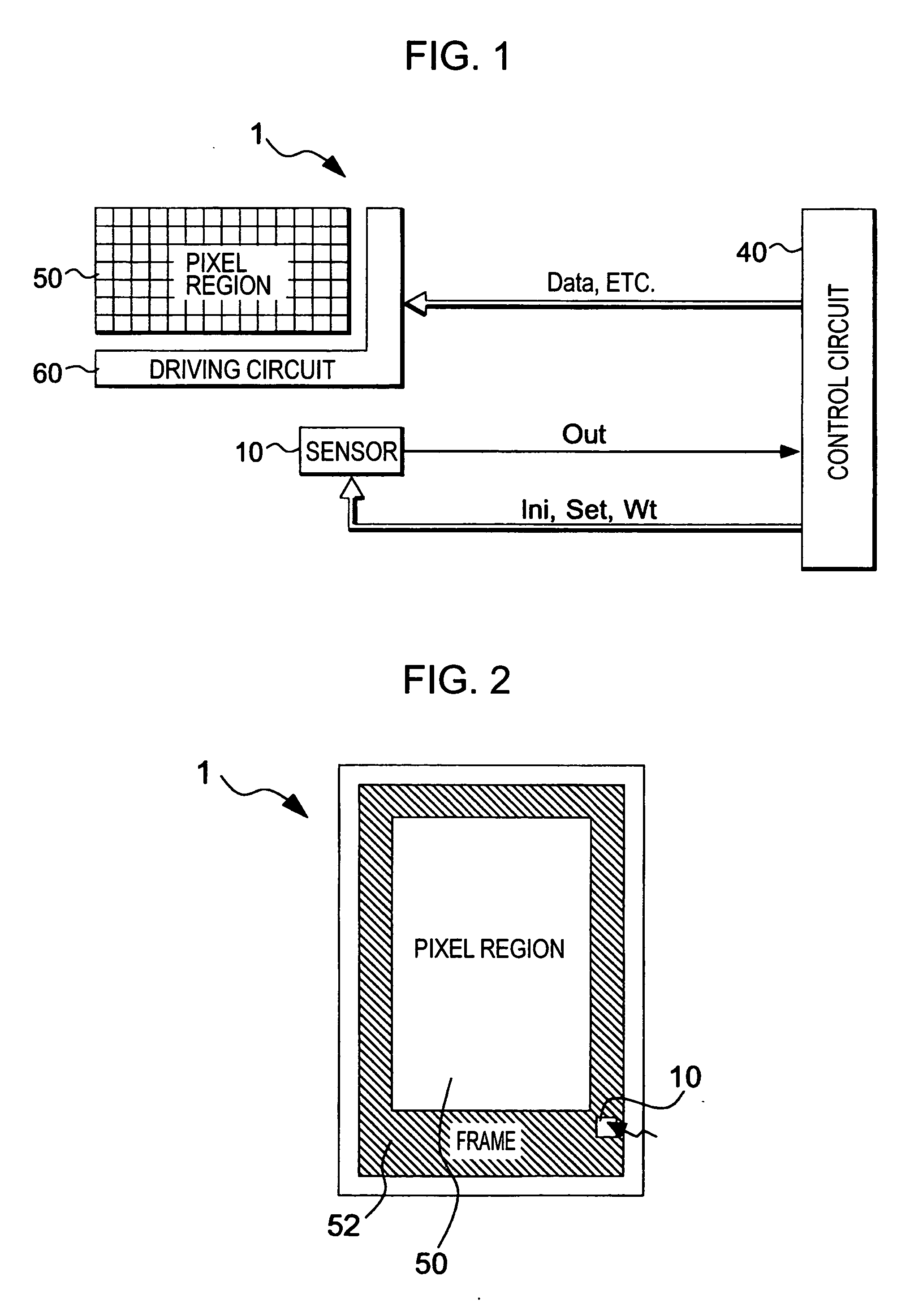Optical sensor, output processing method of optical sensor, display device, and electronic apparatus
- Summary
- Abstract
- Description
- Claims
- Application Information
AI Technical Summary
Benefits of technology
Problems solved by technology
Method used
Image
Examples
first embodiment
[0034]FIG. 1 is a block diagram showing the overall structure of a display panel including an optical sensor according to a first embodiment of the invention.
[0035] In FIG. 1, an optical sensor 10 outputs a signal Out according to the amount of received light, which will be described later in detail. According to the present embodiment, as the amount of the received light increases, the pulse width of the signal Out is narrowed.
[0036] As shown in FIG. 2, the optical sensor 10 is provided right below a frame (light shielding layer) 52 which defines an outer circumference of a pixel region 50. In addition, a light receiving surface of the optical sensor 10 is located at a part of the frame 52 where an opening is formed.
[0037] In addition, the pixel region 50 is a region where a plurality of pixels is arranged in a matrix.
[0038] Assuming that the display panel 1 is a liquid crystal panel, the pixels are respectively arranged so as to correspond to intersections of scanning lines an...
second embodiment
[0083] On the other hand, as described above, in the structure in which any one of the plurality of voltages is selected as the voltage Vset according to the state of the signal Out, a plurality of different voltages must be previously prepared, and it must be considered that the structure of the power supply circuit (voltage generating circuit) (not shown) becomes complicated. Therefore, the optical sensor using one kind of voltage Vset while preventing the information according to the received light amount from not being obtained will be described with reference to a second embodiment.
[0084]FIG. 11 is a diagram showing the structure of an optical sensor 10 according to the second embodiment of the invention.
[0085] The optical sensor 10 according to the second embodiment shown in FIG. 11 is the same structure as that in the first embodiment, except that the capacitor element 130 shown in FIG. 3 is replaced with a portion shown by a region Q. Therefore, only the different structur...
PUM
 Login to View More
Login to View More Abstract
Description
Claims
Application Information
 Login to View More
Login to View More - R&D
- Intellectual Property
- Life Sciences
- Materials
- Tech Scout
- Unparalleled Data Quality
- Higher Quality Content
- 60% Fewer Hallucinations
Browse by: Latest US Patents, China's latest patents, Technical Efficacy Thesaurus, Application Domain, Technology Topic, Popular Technical Reports.
© 2025 PatSnap. All rights reserved.Legal|Privacy policy|Modern Slavery Act Transparency Statement|Sitemap|About US| Contact US: help@patsnap.com



